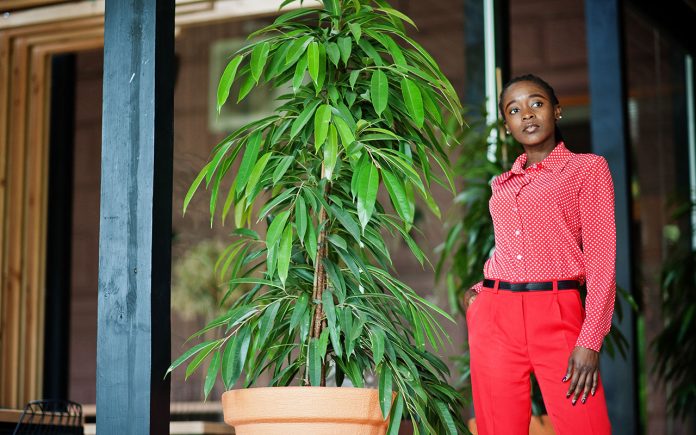The so-called marquise (Alocasia macrorrhiza) is a plant with spectacularly large leaves that can be grown both indoors and outdoors in warm climates. If you want to enjoy your marquise at home or in the garden, don’t miss this article from EcologíaVerde in which we explain what her needs are so that she looks in her best shape and gives life to your home. Read on to discover all the care of the marquise plant in this complete guide!
You may also be interested in: How to fumigate plants with natural products
Location of the marquise plant
Elephant ear can be grown both indoors and outdoors, although in the latter case only if you live in a warm temperature area. This plant does not tolerate frost or intense cold, so if you want to grow it outdoors but in your area the winters are cold, it is best to move it indoors to take it out again when spring arrives.
Now we are going to leave you with some recommendations so that you know which is the most ideal location of the marquise plant according to your home:
- Outdoors: find a large area where the soil offers good drainage.
- Indoors: it will need to be away from heat sources such as stoves and heaters, which dry it out. Always use clay pots and not plastic pots, which drain excess moisture better.
Regarding light, it needs a bright room but protected from direct sun indoors, and a shade or semi-shade location outdoors. If you live in a warm climate such as the Mediterranean, place it directly in the shade to avoid damage from the summer sun.
Watering the marquise plant
The marquise needs very frequent watering, so much so that outdoors it runs the risk of drying out the soil in which it is found. But be careful, you should never confuse this with the fact that you can flood the soil or substrate: if you do, you will severely damage it and end up killing it. Now then:
- In the warm months: you should water the marquise daily, without letting the substrate or soil ever dry out completely. In fact, with this plant pots with a water tank are highly recommended.
- In the cold months: You can reduce the frequency of watering a little, but you should keep an eye on the plant in case its leaves show signs of drought to water it more.
Soil, substrate and fertiliser for the marquise
The most important thing at this point is that the plant enjoys soil or substrate with the best possible drainage, since it is vital that despite the frequent watering it needs, its soil does not become waterlogged.
In addition, the plant, due to its size and vigor, absorbs a large amount of nutrients from the soil, so it is necessary to provide it with fertilizer regularly. It is best to use organic fertilizers such as worm castings or compost, which you can provide regularly every 3 weeks outdoors.
Indoors or in a pot, prepare a substrate with coconut fiber, worm castings and peat in equal parts, along with a good amount of vermiculite and perlite. This way you will have a very nutritious and well-drained mixture. Add a little more worm castings or compost every 15 days in the warm months, and the plant will develop without problems.
Transplanting the marquise
Alocasia macrorrhiza needs to be transplanted approximately every 2 years when grown in a pot. This should be done during the winter, while the plant is in vegetative rest. Transfer it to a larger container with a good substrate mix and it will continue to grow healthy and strong.
Problems of the marquise plant
If your marquise develops small leaves during flowering, you should not be alarmed: it is a totally natural process in the plant and, once the season is over, it will develop large leaves again as normal. If you see that the leaves turn yellow, it may be:
- Because the leaf is old and the plant is getting ready to change it
- Because your marquise suffers from a plague such as red spider mites, which you will have to treat. Find out how to get rid of red spider mites in the following article from EcologíaVerde.
If you want to read similar articles to Marquise plant: care, we recommend that you visit our Garden Care category.










